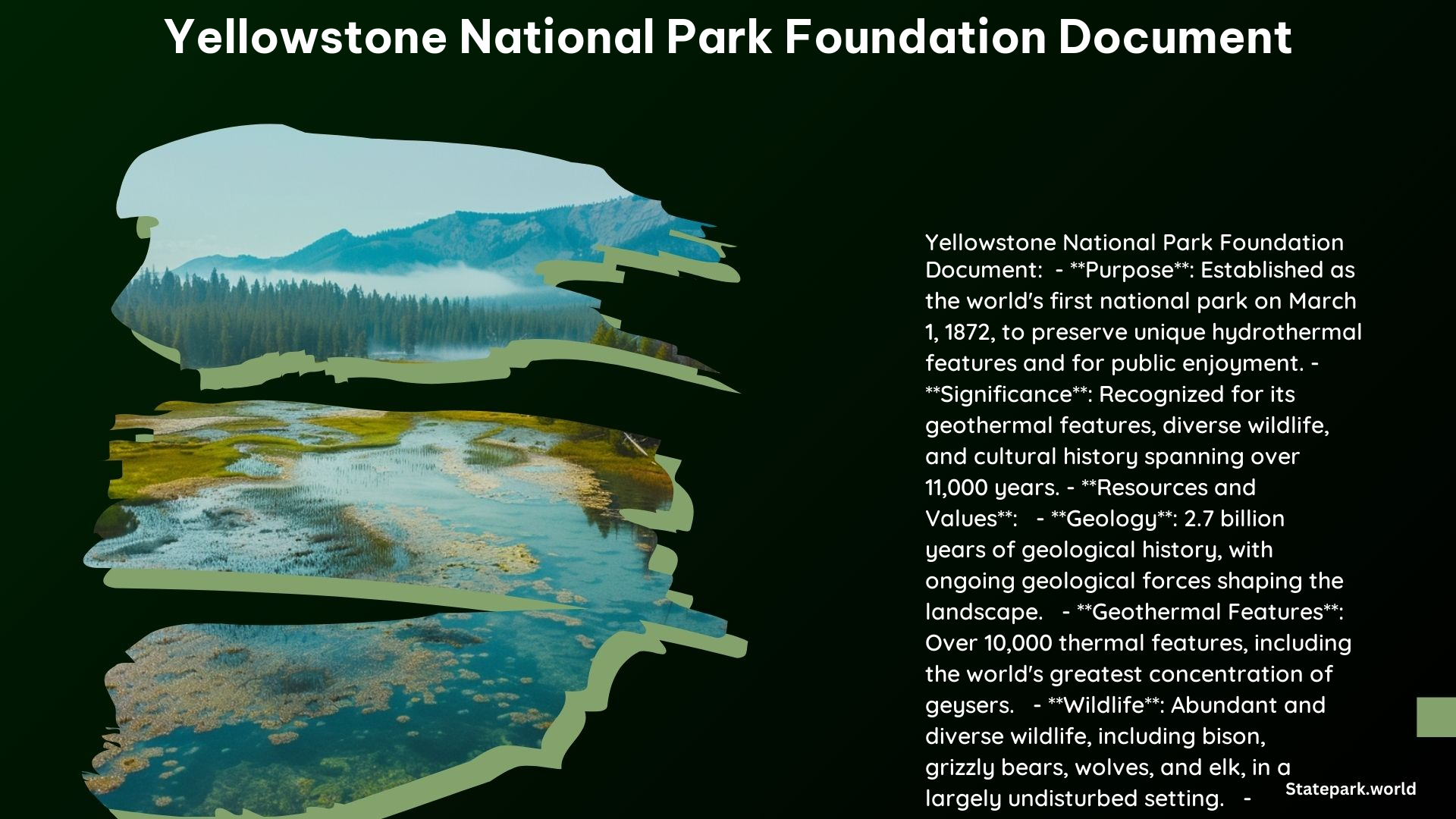The Yellowstone National Park Foundation Document is a comprehensive guide that outlines the purpose, significance, fundamental resources and values, interpretive themes, and legal and policy requirements of Yellowstone National Park. As the world’s first national park, Yellowstone is a unique and irreplaceable natural wonder that has captivated visitors for over a century.
Purpose and Significance of Yellowstone National Park
Yellowstone National Park was established in 1872 with the primary purpose of preserving its unique hydrothermal features and providing for the benefit and enjoyment of the people. The park’s significance lies in its diverse and awe-inspiring natural resources, including:
- Over 10,000 thermal features, including the world’s greatest concentration of geysers
- A wide variety of wildlife, such as bison, grizzly and black bears, gray wolves, elk, bighorn sheep, coyotes, otters, and cutthroat trout
- More than 11,000 years of human history, including the cultural resources of American Indians, trappers, explorers, miners, U.S. Army personnel, National Park Service and private sector concession staff, neighboring communities, and park visitors
Fundamental Resources and Values

The Yellowstone National Park Foundation Document identifies the park’s fundamental resources and values, which are essential to preserving the park’s unique character and significance. These include:
Natural Resources
- Hydrothermal features: Yellowstone has more active geothermal features than the rest of the world combined, supporting diverse thermophilic life forms.
- Wildlife: Yellowstone is home to abundant, diverse, and free-ranging wildlife in a largely undisturbed setting.
- Ecosystem: The Greater Yellowstone Ecosystem is one of the largest and most intact temperate ecosystems in North America.
Cultural Resources
- Human history: Yellowstone preserves resources associated with more than 11,000 years of human history, providing insights into various cultures, values, and perceptions.
- First national park: Yellowstone is the world’s first national park and continues to be a model for preservation and enjoyment of park resources.
Interpretive Themes
The Yellowstone National Park Foundation Document outlines several key interpretive themes that guide the park’s educational and interpretive programs:
- Geology: Yellowstone lies on a restless part of the earth, with physical evidence of its geologic history spanning at least 2.7 billion years.
- Geothermal Features: The park has more active geothermal features than the rest of the world combined, supporting diverse thermophilic life forms.
- Natural Resource Preservation: The Greater Yellowstone Ecosystem preserves a world-renowned biological reserve that includes mostly intact wildlife communities and rare and endangered species.
- Wildlife: Yellowstone is home to abundant, diverse, and free-ranging wildlife in a largely undisturbed setting.
- Ecosystem: The greater Yellowstone area is one of the largest and most intact temperate ecosystems in North America.
- Human Culture and History: The park preserves resources associated with more than 11,000 years of human history, providing insights into various cultures, values, and perceptions.
- First National Park: Yellowstone is the world’s first national park, and it continues to be a model for preservation and enjoyment of park resources.
- Wildness: Yellowstone is an extraordinary place in which to experience wildness.
- Laboratory: The park’s diverse resources, ecological processes, and cultural history provide important opportunities for research and education.
- Climate Change and Sustainability: Engaging in sustainable practices decreases human contributions to climate change.
Legal and Policy Requirements
The Yellowstone National Park Foundation Document also outlines the legal and policy requirements that guide the management and preservation of the park. These include:
- Enabling Legislation: Yellowstone National Park was established by an act of the U.S. Congress on March 1, 1872.
- National Park Service Organic Act: This act formally established the National Park Service on August 25, 1916.
- UNESCO Designations: Yellowstone was named a Biosphere Reserve in 1972 and a World Heritage Site in 1978.
Conclusion
The Yellowstone National Park Foundation Document is a comprehensive guide that ensures the preservation and interpretation of the park’s significant resources and values. By understanding the purpose, significance, fundamental resources and values, interpretive themes, and legal and policy requirements, the National Park Service and its partners can effectively manage and protect Yellowstone National Park for the benefit and enjoyment of present and future generations.
